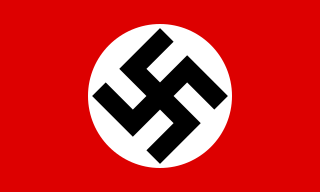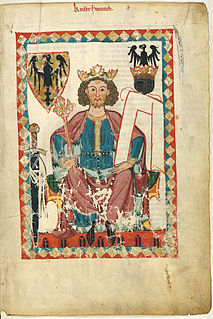 W
WThe Hitler Oath —also referred in English as the Soldier's Oath—refers to the oaths of allegiance, sworn by the officers and soldiers of the German Armed Forces and civil servants of Nazi Germany between the years 1934 and 1945. The oath pledged personal loyalty to Adolf Hitler in place of loyalty to the constitution of the country. Historians view the personal oath of the Third Reich as an important psychological element to obey orders for committing war crimes, atrocities, and genocide. During the Nuremberg trials, many German officers unsuccessfully attempted to use the oath as a defense against charges of war crimes and crimes against humanity.
 W
W"Horst-Wessel-Lied", also known by its opening words, "Die Fahne hoch", was the anthem of the Nazi Party (NSDAP) from 1930 to 1945. From 1933 to 1945 the Nazis made it the co-national anthem of Germany, along with the first stanza of the "Deutschlandlied".
 W
WThe Nazi salute, Hitler salute, or Sieg Heil salute, is a gesture that was used as a greeting in Nazi Germany. The salute is performed by extending the right arm from the neck into the air with a straightened hand. Usually, the person offering the salute would say "Heil Hitler!", "Heil, mein Führer!", or "Sieg Heil!". It was adopted in the 1930s by the Nazi Party to signal obedience to the party's leader, Adolf Hitler, and to glorify the German nation. The salute was mandatory for civilians but mostly optional for military personnel, who retained the traditional military salute until the failed assassination attempt on Hitler on 20 July 1944.
 W
WVarious organisations in Nazi Germany required their members to swear oaths to Adolf Hitler by name, rather than to the German state or an officeholder. Such oaths were intended to increase personal loyalty to Hitler and prevent dissent. The Hitler oath, introduced for all members of the Wehrmacht and civil servants in 1934, was one such oath. Others were sworn by members of organisations such as the Schutzstaffel (SS), whose oath may have inspired the Hitler oath, and by the Hitler Youth.
 W
WThe use of flags from the German Third Reich (1933–1945) is currently subject to legal restrictions in a number of countries.
 W
WThe Reichsadler is the heraldic eagle, derived from the Roman eagle standard, used by the Holy Roman Emperors and in modern coats of arms of Germany, including those of the Second German Empire (1871–1918), the Weimar Republic (1919–1933) and the Third Reich.
 W
WThe term Reichskriegsflagge refers to several war flags and war ensigns used by the German armed forces in history. A total of eight different designs were used in 1848/49 and between 1867/1871 and 1945.
 W
WThe swastika symbol, 卐 or 卍, is an ancient religious icon in the cultures of Eurasia. The left-facing version may also be referred to as sauwastika. It is used as a symbol of divinity and spirituality in Indian religions, including Hinduism, Buddhism and Jainism. In the Western world, it was a symbol of auspiciousness and good luck until the 1930s when the right-facing tilted form became a feature of Nazi symbolism as an emblem of the Aryan race. As a result of World War II and the Holocaust, many people in the West still strongly associate it with Nazism and antisemitism. The swastika continues to be used as a symbol of good luck and prosperity in Hindu and Buddhist countries such as Nepal, India, Mongolia, China and Japan. It is also commonly used in Hindu marriage ceremonies.